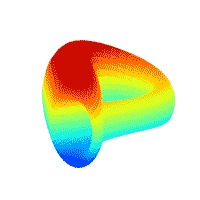What Does DApps Stand For: Unveiling Decentralized Applications

In the rapidly evolving world of blockchain and cryptocurrency, various innovative terms and technologies have emerged, each promising to revolutionize the digital landscape. One of these transformative elements is DApps. But what does DApps stand for, and why are they making waves in the tech industry? This article will delve deep into the essence of DApps, their architecture, advantages, disadvantages, and the profound impact they are having on the decentralized ecosystem.
Understanding DApps
DApps, short for Decentralized Applications, are applications that operate on a blockchain network rather than relying on a centralized server. This decentralized nature is the crux of blockchain technology and stands in contrast to traditional applications that depend on a single authority or server to function.
Characteristics of DApps
-
Open Source: True DApps are designed to be open-source, meaning their source code is available for anyone to view, modify, and distribute. This transparency builds trust among users.
-
Decentralized: As the name suggests, DApps are decentralized, ensuring no single entity has full control over the application.
-
Blockchain-Based: DApps utilize blockchain to store their data and smart contracts to execute their processes.
-
Incentivized: DApps often use tokens as incentives for users who contribute to the system, ensuring the network's security and functionality.
Why Are DApps Gaining Attention?
DApps are being hailed as revolutionary due to their potential to disrupt traditional centralized models. Let's explore why they are garnering so much attention:
Transparency and Security
Since DApps are built on blockchain networks, they inherit the robust security and transparency features inherent in blockchain technology. The transparent nature of blockchain allows for the creation of trustless environments, reducing the risk of fraud.
User Autonomy
Decentralized applications give users more control over their data. In the traditional app model, data about users is stored in central repositories controlled by corporations. With DApps, users retain ownership and control over their data, changing the dynamic of user privacy and data security.
Resistance to Censorship
DApps are less susceptible to censorship. Since data is distributed across a wide network of nodes, it is challenging to modify or censor information, making them ideal for applications where freedom of speech and information distribution are critical.
Innovative Economic Models
DApps often incorporate their own token economies. By utilizing smart contracts, they can automatically execute agreements when certain conditions are met, fueling innovative business models and decentralized finance (DeFi) applications.
The Architecture of DApps
The Frontend and Backend
-
Frontend: Similar to traditional apps, DApps have a frontend that users interact with. This can be a website or a mobile application.
-
Backend: Instead of running on centralized servers, the backend of DApps is composed of a smart contract or multiple smart contracts that reside on the blockchain.
Smart Contracts
Smart contracts are self-executing contracts with the terms of the agreement directly written into code. They are the key component of DApps, allowing for automatic and frictionless transactions among parties.
Consensus Mechanism
DApps rely on a consensus mechanism to validate and record network transactions. The most common mechanisms are Proof of Work (PoW) and Proof of Stake (PoS), each having its own pros and cons regarding efficiency and security.
Real-World Examples of DApps
-
Ethereum: As the platform that popularized the concept of DApps, Ethereum hosts numerous applications ranging from DeFi applications like Uniswap to digital assets such as CryptoKitties.
-
Bitcoin DApps: While less common, Bitcoin’s network supports simple DApps such as payment systems.
-
Filecoin and Storj: These are decentralized cloud storage solutions where users can rent out unused storage space in a P2P fashion.
Challenges Facing DApps
Despite their potential, DApps face considerable challenges:
Scalability
As blockchain networks grow, the ability to scale efficiently becomes a critical issue, affecting the DApp’s performance.
User Experience
The complexity of blockchain technology can result in a steep learning curve for end-users, making it a challenge to attract mainstream adoption.
Regulatory Hurdles
Differing regulatory stances across regions pose challenges to DApps looking to operate on a global scale, often leading to legal ambiguities.
The Future of DApps
DApps represent a paradigm shift in how applications are built and operated, promising a future where users have more control and transparency. As blockchain technology continues to advance and overcome existing challenges, the adoption and functionality of DApps will likely expand, infiltrating diverse sectors beyond finance, such as healthcare, governance, and more.
The potential for DApps is vast and largely untapped. With continuous innovation and investment, the boundaries of what DApps can achieve remain limitless. Whether it's disrupting financial systems, enhancing digital governance, or creating new ways for individuals to collaborate, decentralized applications offer a promising digital future worth exploring.





















